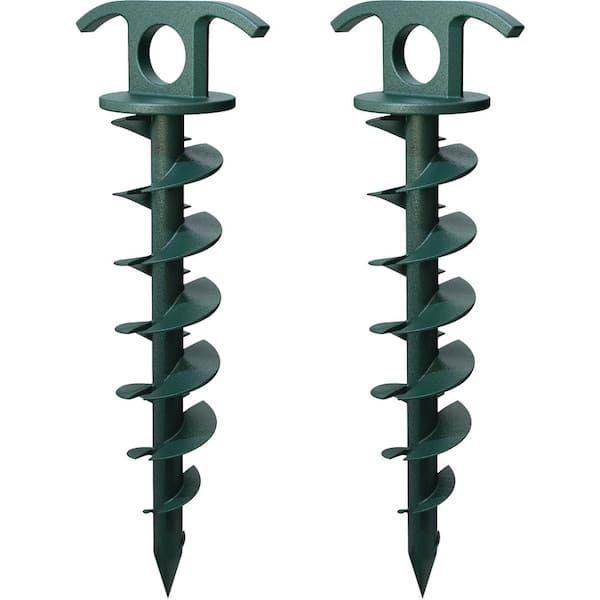Breaking Down the Different Types of Ground Anchor Systems for Secure Installations
Breaking Down the Different Types of Ground Anchor Systems for Secure Installations
Blog Article
Understand Why Ground Support Is Essential for Security and Durability
Ground anchors are a crucial component in building, supplying vital assistance and security for numerous frameworks. Their capability to move tons properly to the ground not only enhances architectural integrity but also plays a substantial duty in mitigating dangers connected with ecological elements, such as unstable soil and seismic activity. Understanding the various kinds and applications of ground anchors can brighten their important duty in making sure security and sturdiness. Nevertheless, the complexities of their setup and the advantages they offer may not be right away obvious, motivating more expedition into this essential subject.
Role of Ground Anchors in Building And Construction
Ground supports play a critical duty in building by supplying important assistance and security to structures. These gadgets are designed to move tons from a framework to the ground, making sure that structures and other infrastructures stay safe and secure under various problems. Ground supports are particularly important in scenarios where dirt conditions are unpredictable or where there is a threat of lateral motion, such as on inclines or near bodies of water.
The setup of ground supports includes boring right into the earth to get to secure dirt or bedrock, where the anchors can be firmly anchored. This process not only enhances the structural honesty of a job however also reduces the dangers linked with dirt erosion and moving. Furthermore, ground anchors can be used in temporary frameworks, such as building and construction websites, where they provide necessary stablizing during the structure process.
Ground supports also add to the durability and resilience of frameworks by lowering the possibility of settlement and failing. Ground Anchor. By efficiently dispersing and handling tons, these important parts are important in preserving safety and security criteria and ensuring the integrity of numerous construction jobs. Generally, the importance of ground anchors in building and construction can not be overemphasized, as they are indispensable to successful engineering practices
Types of Ground Anchors


While various sorts of ground anchors exist, each offers certain applications and problems within building and construction tasks. The most usual types consist of mechanical supports, grouted anchors, and driven supports.
Mechanical anchors, such as development anchors, use a mechanical action to protect the anchor within the substratum - Ground Anchor. These are frequently utilized in lightweight applications, like securing components to masonry or concrete
Grouted anchors, on the other hand, entail piercing a hole, positioning a steel rod or cable television, and then loading the annular area with grout. This technique is ideal for high-load situations, providing improved stability and resistance to vibrant forces often located in heavy construction.
Driven anchors are generally mounted by driving a steel rod or pipeline right into the ground, making them appropriate for temporary applications such as safeguarding scaffolding or formwork. When no much longer needed., they are fast to set up and can be removed easily.
Various other specific anchoring systems include helical supports, which are screw-like tools used in numerous soil conditions, and deadman anchors, which rely upon the weight of a buried challenge supply stability. Each sort of ground support is developed to meet particular engineering needs, making certain safety and architectural stability.
Advantages of Making Use Of Ground Supports
The benefits of utilizing ground supports in construction tasks are considerable, enhancing both safety and structural performance. Ground supports give vital resistance versus side forces, such as dirt motion, wind lots, and seismic task. This resistance helps maintain the stability of structures, protecting against prospective failures that could lead to pricey repair services or dangerous situations.
Additionally, ground anchors facilitate the efficient transfer of loads from frameworks to the surrounding soil, making sure a balanced circulation of weight. This tons transfer reduces the danger of clearing up or shifting, which can compromise the integrity of a building gradually. By employing ground anchors, engineers can additionally develop much more effective styles, as they allow for slimmer architectural aspects while keeping safety standards.
Additionally, ground supports are adaptable and flexible to numerous dirt problems and task requirements. Their setup can commonly be completed rapidly and with very little interruption to the surrounding setting, making them here are the findings an effective choice for numerous building and construction applications. Eventually, the usage of ground supports boosts not just the resilience of structures but also adds to a safer working atmosphere for construction personnel and future occupants.
Common Applications and Makes Use Of
Many building jobs leverage ground anchors for their performance in improving stability and safety and security. These versatile elements are generally employed in different applications across the building and construction and civil engineering markets. One prevalent application is in maintaining walls, where ground anchors give the essential support to stop dirt motion and preserve architectural stability.
Additionally, ground anchors are important in protecting short-term structures, such as scaffolding and shoring systems, ensuring they continue to be secure during building and construction tasks. In the world of foundation support, they are utilized to strengthen existing structures, specifically in areas susceptible to ground settlement or changing soil conditions.
Ground anchors likewise locate considerable usage in incline stabilization jobs, where they help alleviate landslide dangers by securing the soil to steady rock formations. Another substantial application is in the installment of wind generators, where they protect the base against side pressures produced by wind, guaranteeing functional security and longevity.
Additionally, ground anchors are used in tunneling jobs to support the surrounding ground during excavation. Their diverse applications underline the vital function ground anchors play in preserving safety and security and longevity in numerous building and construction scenarios.
Installment Best Practices
Effective application of ground supports in various building jobs rests on reliable setup practices. Proper installment is crucial to guarantee the anchors fulfill their intended objective and keep structural stability over time. Trick finest methods consist of detailed website assessment, which entails assessing dirt problems, tons demands, and environmental aspects that might affect anchor performance.
Prior to installation, it is important to choose the proper kind of ground anchor based on the certain application and soil features. Making use of high-quality products and sticking to manufacturer specs will certainly enhance the anchor's longevity and performance. During installment, make certain that the support is placed at the proper angle and deepness, as these variables considerably affect load-bearing capacity.
Furthermore, utilizing correct devices and strategies is essential, consisting of boring or driving techniques customized to the site problems. After installation, carrying out tons screening can verify the anchor's performance and determine any prospective problems early. Normal inspections are also recommended to keep an eye on the condition of the anchors and surrounding dirt. By following these installment finest techniques, specialists and engineers can improve the safety and security and durability of structures reliant on ground anchors.

Final Thought
In recap, ground supports are necessary parts in construction, significantly enhancing safety and security and sturdiness. The diverse types and benefits of ground anchors, combined with their varied applications, highlight their importance in look at here both temporary and Find Out More irreversible structures.
The installation of ground anchors entails exploration into the planet to reach steady dirt or bedrock, where the anchors can be firmly secured.The advantages of using ground supports in construction jobs are significant, boosting both safety and structural performance.Many building and construction tasks leverage ground anchors for their effectiveness in enhancing security and safety and security.Successful application of ground anchors in various construction projects hinges on reliable installation methods.In recap, ground supports are crucial components in construction, considerably enhancing safety and toughness.
Report this page